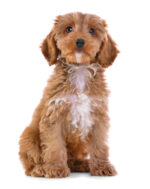Cats can be classed as senior from around the age of seven. At this age, you may find they choose to spend more time inside, meaning they become less active and their metabolism slows. This tends to mean they begin to put weight on, so it is important to start focusing more on the quality of food you give to them. As your cat ages, they can also lose their sense of smell and taste which ultimately affects their appetite, and their body condition.
What should I feed my senior cat?
There are so many cat food options out there, and many have age recommendations on the packaging. It is advised to try and stick to these age recommendations. Senior cats tend to require certain nutrients and vitamins, and senior cat food is packed with these essential health benefits. Not only this, cat food formulated specially for senior cats, contain high quality protein and vitamin E to help strengthen their natural defences. Senior cat food can also contain fewer calories.
You may find that your cat is struggling to chew as they get older, or perhaps their appetite is changing. This may be a sign that you need to move your cat over to another type of cat food which is softer, and so easier to chew and digest. Senior cat food tends to contain more meat, which improves the smell and flavour of the food.
Felines fluffier than life!
If your cat is particularly fluffy, you may find that they’re grooming themselves a lot more frequently. The amount they groom can also increase as they age. They may become more vigorous in their cleaning routine, which means they start to swallow large quantities of hair. If you find this is the case with your cat, look out for food that is designed specifically for reducing hairballs, as it is designed to naturally stimulate their intestinal tract. This means that even if your cat continues to swallow hair daily, it can be eliminated after digestion, rather than building up in the stomach and being regurgitated.
How to feed senior cats
It is advised to feed your older cat little and often, as their stomachs can feel overwhelmed by a lot of food in one go. Room temperature food is best too, as it means they can taste and smell the food properly. If you’re giving your cat dry food, ensure you keep it fresh in an airtight container. You may find that your cat struggles to eat dry food as they age, especially if they have a few missing teeth, so you may need to add a tiny bit of warm water to make it easier to chew.
Always ensure your cat has plenty of clean water available in a large bowl. If your cat struggles to drink or seems to not like drinking water out of bowls, a small cat water fountain could help.
Remember
All cats are different, so what works for one cat may not work for yours. If you find that the above advice is not working for your cat, your cat is struggling to eat or drink, or they lose their appetite frequently, consult your local vet practice for help.
 The Vetsure Network
The Vetsure Network  Find a Vet Clinic
Find a Vet Clinic 